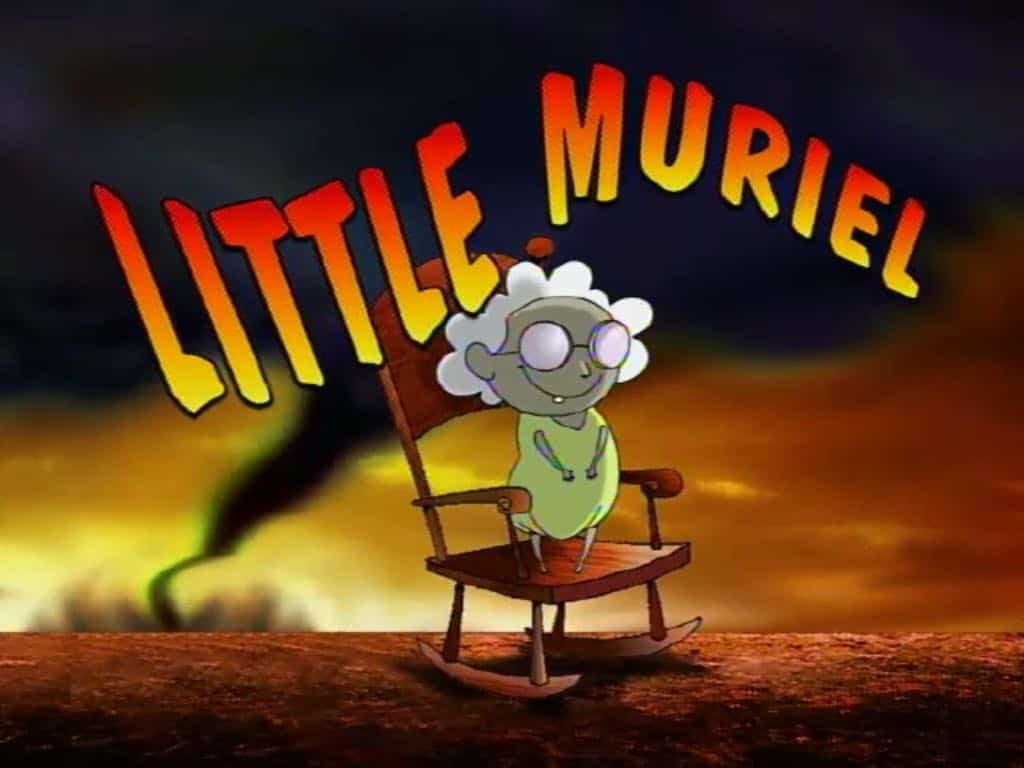Often in stories with a very small character there is some metaphorical/thematic reason for it, but in this case Muriel’s regression to the body and mind of a 3 and a half year old is pure fun. In other words, this is a carnivalesque story.
SETTING
The first thing we see about this setting is that it is very windy. The sky is an ominous shade of purple, the windmill spins quickly and Muriel’s washing is flapping on the line.
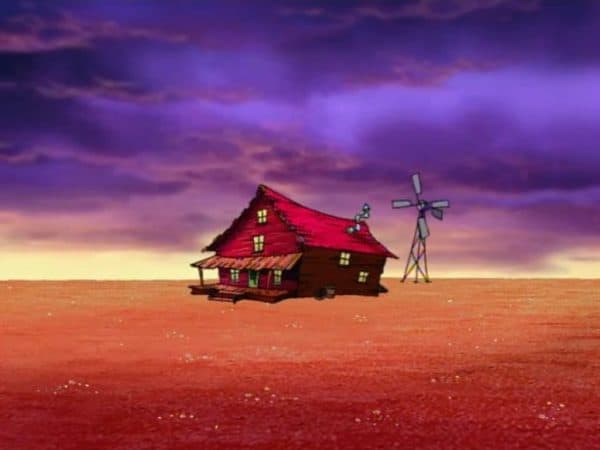
We see the metaphor of a cliff in this story, as Muriel and Courage (and Eustace) come close to death. For more on that see The Symbolism Of Altitude.
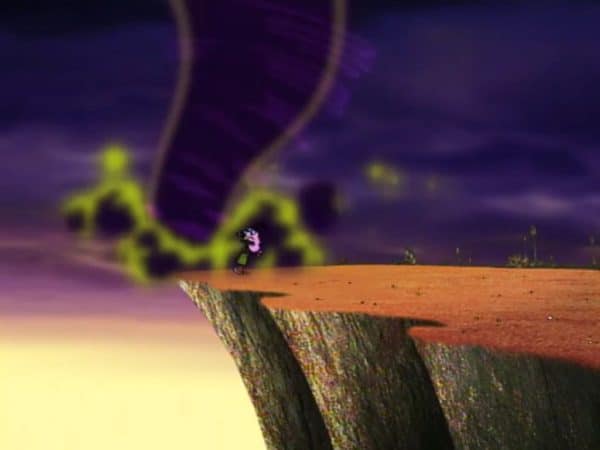
STORY STRUCTURE
SHORTCOMING
In his attempt to be helpful and kind Courage sometimes screws up. He has accidentally glued Muriel to her rocking chair thinking it was quick drying paint. And a storm is coming.
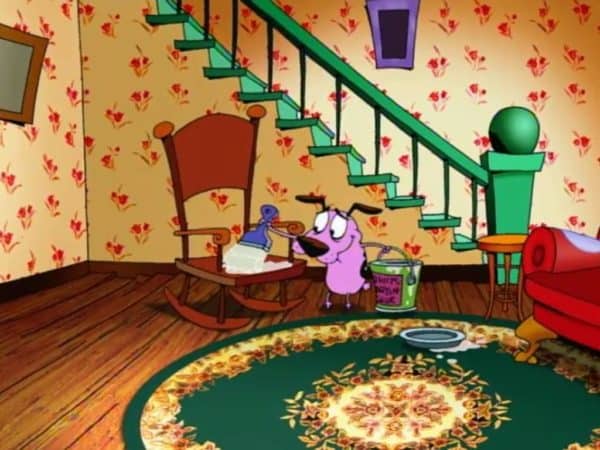
The story requires for Muriel to be stuck to the chair, but also for the chair to be stuck to the floor. She needs to be trapped. They get around this by showing Eustace in the basement fixing the basement ceiling — a long nail pokes right through and nails the chair to the living room floor.
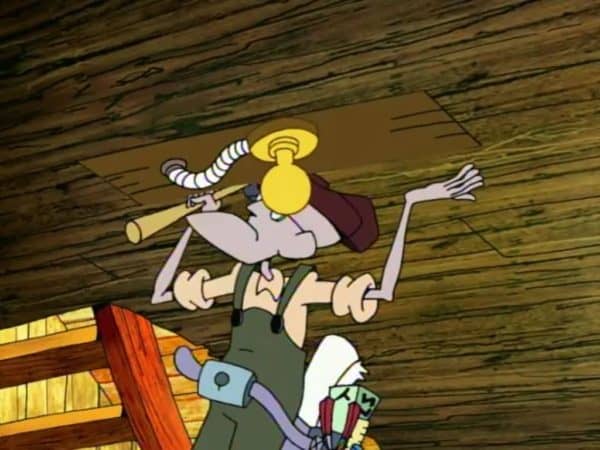
The writers also get rid of Eustace by having him knock himself out cold.
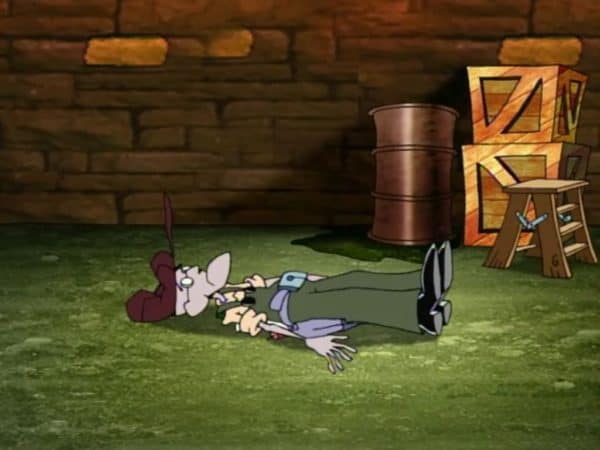
DESIRE
He wants to save Muriel from the hurricane.
OPPONENT
Although it’s perfectly possible to make a story with only a natural opponent (hurricanes, tsunamis), the most successful stories (what others have called ‘3D stories’) require human opponents.
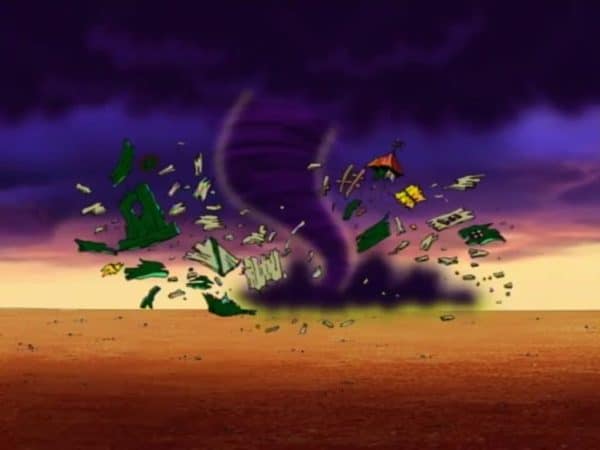
The natural opponent is introduced early on and is of course the hurricane.
The human opponent will be revealed later — in this story it is Muriel as a bratty three and a half year old.
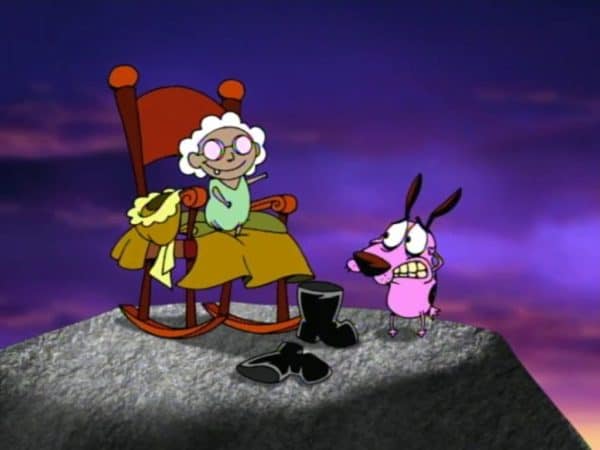
PLAN
Courage ties a piece of string between a rock and a tree and ‘trips’ the hurricane up. The hurricane throws Muriel onto the top of a high, pointy rock.
After returning home with little Muriel the computer tells him that the only way to bring Muriel back is to drop her into the eye of a hurricane going in the opposite direction, which can be found in the Southern Hemisphere. This is a reference to the Coriolis effect (not actually observable in sinks and toilets as many believe).
BIG STRUGGLE
I don’t get the feeling the writers really know children. Muriel as a three and a half year old has one tooth. This is an age when children (temporarily) have a full set of teeth.
I also don’t buy that Muriel would have been such a bratty three and a half year old, but that is not the point. (Show me the child at three and I’ll show you the woman.) The point is to have fun. I can believe the hurricane results in some kind of personality change.
It’s interesting what I find believable and unbelievable, because this show is full of unbelievable things. We accept that Courage magically finds a tricycle and a kite as he’s chasing after Muriel. It’s funny that he can ‘trip’ up a hurricane. If the writers wanted to, they could have had the house magically rebuilt when Courage returns. We often see the house decimated at the end of an episode, only to see it just the same as it ever was at the beginning of the next. But no — that’s the thing about the rules of story — the writers must wait until the end of this episode before rebuilding the house.
The carnivalesque antics must therefore take place in a house with no roof.
And this is the main big struggle — pleasing Muriel who demands very specific food and then refuses to eat it and keeping her safe.
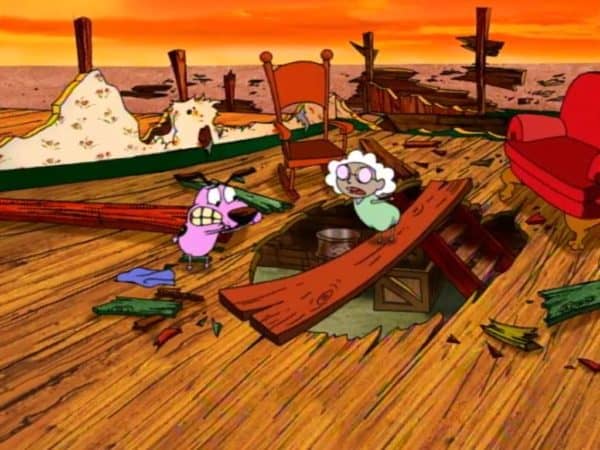
When Muriel makes a nuisance of herself on the plane to the Southern Hemisphere even the pilot jumps out with a parachute, unable to stand it anymore. He wishes Courage good luck and hands him a plane flying manual.
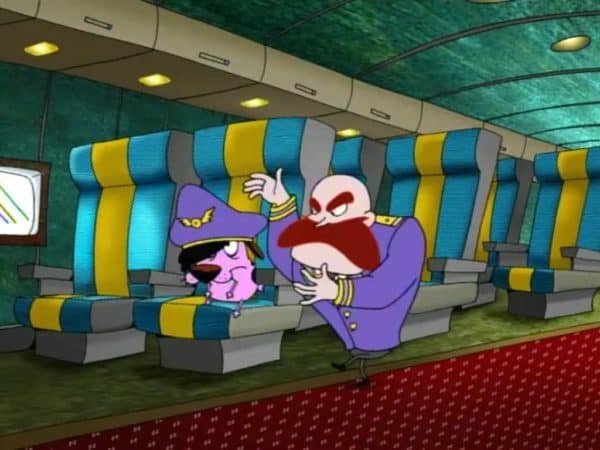
SELF-REVELATION
When Muriel walks out her own self we know Courage has saved the day.
The TV announcer lets us know that the hurricane warning is over. (Darkly humorous given the house is in total disrepair.) Now there will be a tsunami.
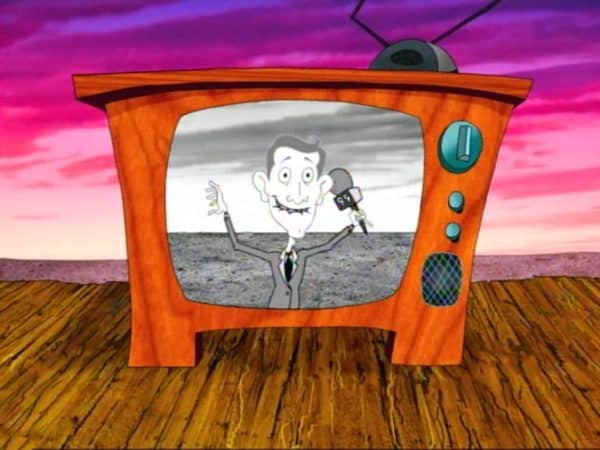
NEW SITUATION
In this circular shaped story, we last see the Bagge family riding away on a massive wave.
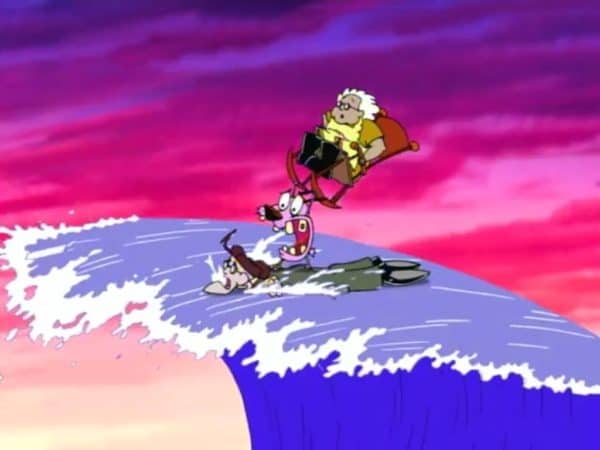
EXTRAPOLATION
We extrapolate that Courage will save them somehow because he knows ‘how to ride the waves’.
